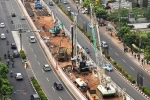This article has been translated by PwC Indonesia as part of our Plantation News Highlights service. PwC Indonesia has not checked the accuracy of, and accepts no responsibility for the content.
Bisnis Indonesia - Dilema pemutihan kebun sawit
By Hendra Wibawa
If there is no extension, the fate of millions of hectares of oil palm plantation land that overlaps with forest areas will be decided today, Thursday (2/11).
This refers to Law No. 11/2020 on Job Creation which sets a deadline for processing permits for oil palm plantations in forest areas until 2 November 2023.
Initially, the government recorded that 3.3 million hectares (ha) out of a total of 14.4 million ha of oil palm plantations are in forest areas. However, the record of oil palm plantations in forest areas could be even larger. Audit results by the Finance and Development Supervisory Agency (BPKP) in 2021 found that oil palm coverage reached 16.8 million ha, where 10.4 million ha are private and national plantations, while a small portion are smallholder plantations.
Environment and Forestry Ministry Secretary General Bambang Hendroyono said that there are two typologies for settling oil palm plantations in forest areas. First, Article 110 A of the Job Creation Law regulates oil palm plantations that have been operating and have a plantation business permit (IUP) and comply with the spatial layout of the issued permit, but their status is in production forest areas, protected forest areas, and conservation forest areas.
Second, Article 110 B of the same law mentions the settlement of oil palm plantations that have been operating in production forest areas, protected forest areas, and conservation forest areas, but do not have permits in the forestry sector, which means they are illegal.
So far, he noted that the first model solution was chosen by most owners of oil palm plantation in forest areas.
"Many have come in, so I would say 90% has been settled based on [Article] 110A," said Bambang at the Ombudsman Office on Tuesday (31/10).
He revealed that most of the permit processing came from oil palm land in the Central Kalimantan region, which reached 516,000 ha. It was followed by Riau, Jambi, South Sumatra, North Sumatra, West Sumatra, Riau Islands, Bangka Belitung, East Kalimantan, and South Kalimantan Provinces.
With the deadline set today, Thursday (2/11), he encouraged oil palm plantation business players to immediately process permits to release forest areas.
"Submit and report immediately through existing mechanisms, to the minister or fill out the Siperibun [permit application]," he said.
Tolerance for releasing forest area status can only be given to oil palm plantations that overlap with production forest areas and other use areas (APL), but not for oil palm plantations in protected forests and conservation forests.
Oil palm plantations in protected forest and conservation forest areas must be returned to the state. Currently, there are around 200,000 ha of illegal oil palm land in the protected forest and conservation forest areas.
According to him, business players that operate oil palm plantation businesses in the protected forest and conservation forest areas must pay administrative fines and forest restoration costs to the state. Afterwards, the land must be returned to the state due to protected forest and conservation forest status. "So, we are sorry, oil palm [plantations] are not allowed in protection and conservation areas," said Bambang.
The regulation for returning oil palm land in the protected forest and conservation forest areas has been decided by the Supreme Court. Bambang claimed that the return of oil palm land in the protected forest and conservation forest areas to the state for restoration is a form of the government's commitment to control the impact of climate change.
"The old oil palm trees will be replaced for protection and conservation purposes and replanted with [other types of] trees, so the oil palm should be in the right place, in other use areas," he said.
In particular, he explained that unlicensed or illegal oil palm plantations located in production forest areas may be able to continue their business for one more oil palm business cycle or around 25 years. However, he stated that these business players are still required to pay fines to the state.
"One complete cycle, the important thing is that they obtain legal status, no longer [subject to] criminal [sanctions], but administrative [fines]," he added.
Agrarian Affairs and Spatial Planning Minister/National Land Agency Head (ATR/BPN) Hadi Tjahjanto said that many business players registered their plantations to be released from forest area status. Regarding the option of extending the permit processing period, Hadi said this opportunity would be discussed at a government meeting in the next few days. "We will follow the results of the meeting decision. I think in 1-2 days there will be an invitation to a meeting regarding the decision," said Hadi on Tuesday (31/10).
On a separate occasion, Head of the Indonesian Palm Oil Association (IPOA) Eddy Martono stated that caution was needed in the policy of status clearing for oil palm plantations in forest areas.
"Because the company is not necessarily at fault. For example, those who have obtained HGU [cultivation rights] but are deemed to be in forest area. If they already have HGU, they should be outside the forest area and this has been strengthened by the statement from ATR/BPN," said Eddy on Wednesday (1/11).
On the other hand, Head of the Indonesian Oil Palm Farmers Association (Apkasindo) Gulat Manurung is of the opinion that administrative fines on oil palm land in forest areas pose a risk to the palm oil industry and farmers' welfare.
He believes that farmers whose plantations are in forest areas will not be able to pay the fines.
He stated that 5.8% of the total 3.37 million ha of oil palm plantations in forest areas belonged to smallholders. Of the 200,000 ha of unlicensed oil palm plantations in protected forest and conservation forest areas, they are also predominantly owned by smallholders with an area reaching 65%.
In the future, Gulat estimates that 2.7 million ha of oil palm land will fall under Article 110 B regulation that involves administrative fines as well as a business opportunity for only one cycle or around 25 years.
He said the impact of the imposition of sanctions risks reducing crude palm oil (CPO) production by up to 10 million tonnes per year. In fact, it risks causing riots in oil palm plantation centres.
"We will lose Rp125 trillion-Rp145 trillion per year from upstream and downstream palm oil turnover. The state will lose hundreds of trillions from taxes, export duties, and export levies from the 2.7 million hectares," said Gulat.
Likewise, member of the Indonesian Ombudsman Yeka Hendra Fatika is concerned about the same thing. He asked the government to be careful in implementing the regulation on fines.
The reason is that the palm oil industry base from upstream to downstream is considered very complex. It is feared that the palm oil industry will pass the burden of the administrative fines to the prices of farmers' fresh fruit bunches (FFB), which are likely to plummet and disrupt the supply of CPO and cooking oil.
He has asked the Environment and Forestry Ministry to mitigate these risks to create a conducive momentum for the 2024 elections. Therefore, he proposed postponing the implementation of the regulations until there was an opportunity for an instalment mechanism to pay the fines for business players.
"They are not exempt [from sanctions]. In essence, the Ombudsman only wants to ensure that the convenience and certainty of doing business are guaranteed. The implementation of the law is also guaranteed," said Yeka.
Meanwhile, Forest and Plantation Campaign Manager of the Indonesian Forum for the Environment (WALHI) Uli Artha Siagian is concerned about the risk of ecological disasters and social disasters in the status clearing of oil palm land in forest areas.
She also believes that the government's tolerance for the continuity of oil palm plantations in forest areas shows the weakness of law enforcement.
"Actually, illegal oil palm [plantations] in forest areas should be subject to legal action, either administratively or criminally," said Uli.
On the other hand, the risk of ecological disasters such as floods, land fires, and landslides is prone to occur when the clearing of forest area status of oil palm plantations becomes more massive.
The results of WALHI Indonesia’s field investigations found several fire hotspots originating from the land of oil palm companies that participated in the forest area status clearing program.
These findings certainly contradict the government's claim that revising the status of forest areas for oil palm plantations is an effort to tackle climate change through administrative fines.
"Status clearing of oil palm land in forest areas is carried out on an area of 3.37 million hectares. So, this will reduce the quality of the forest and the quality of the environment," she said.
She added that the risk of socio-economic conflict in local communities was high. The reason is that quite a few illegal oil palm plantations are in the customary areas of local communities. "When status clearing is given, this will provoke a conflict situation on site," said Uli. (Dwi Rachmawati)














